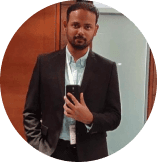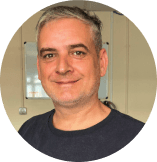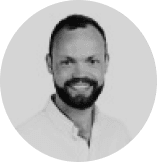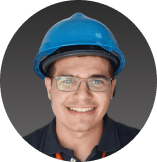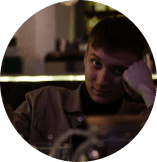In this exclusive interview, we have the privilege of speaking with Mr. Talal Al Nabhani, Material and Integrity Manager at Petroleum Development Oman (PDO) and Event Chairman for OMCORR25, a leading international conference on materials and corrosion. With over 18 years of dedicated service at PDO, Mr. Talal has played a pivotal role in safeguarding the integrity of vital oil and gas infrastructure in Oman, ensuring operational excellence in some of the most demanding environments.
Throughout his career, Mr. Talal has demonstrated exceptional expertise in materials selection, corrosion control, cathodic protection, coating applications, and failure investigation. His leadership has been instrumental in setting high industry benchmarks for asset integrity management, and his technical insights have significantly contributed to PDO’s reputation as a pioneer in safe and sustainable petroleum operations. Beyond his corporate role, his stewardship of OMCORR25 reflects his commitment to advancing global knowledge sharing and fostering innovation in materials and corrosion engineering.
In our conversation, Mr. Talal reflects on his professional journey, the evolving challenges in materials integrity, and the critical role of NDT and corrosion management in the petroleum sector. He also offers a glimpse into his personal interests, his vision for the industry’s future, and his perspective on nurturing the next generation of engineers and technical leaders.
Mr. Talal, welcome to OnestopNDT. It’s an honour to have you with us today. Could you please introduce yourself to our audience and share a glimpse of your professional journey from your early days in corrosion control to your current leadership role at PDO?
My name is Talal Al Nabhani, working in Petroleum Development Oman (PDO) as Material and Integrity Manager. After completing my PhD from the University of Manchester in the UK, I worked in PDO as a Corrosion Control Engineer. After two years, I joined another section within the Material and Integrity team, which is Materials & Corrosion Engineering, where the main responsibility is to conduct material selection at the concept phase, in addition to responsibilities like specification updates, providing technical support in the fields of welding, NDE, non-metallic, coating, etc. After spending 3 years, I moved to a project where I worked as Lead Material and Corrosion Engineer for the biggest project constructed in PDO in terms of size, complexity, and high sour media handling. This gave me great exposure and a challenge to prove myself, learn, and develop my technical and leadership role. Upon completion of this mission, I took the position of Head of Materials & Corrosion Engineering, where more technical and leadership roles were practiced. After that, I moved to my current role as Material and Integrity Manager, where my main role is to be Technical Authority Level 1 (TA1) in Material, Corrosion, and Integrity for the company, with direct management of more than 70 engineers and indirect management of 130 engineers, in addition to managing critical contracts for inspection and integrity in the company.
You have been part of Petroleum Development Oman for nearly two decades, progressing through various technical and leadership positions. What inspired you to specialise in materials and corrosion engineering, and how has that passion evolved over the years?
The material and corrosion field plays a vital role in an oil and gas company with its diversified entities like Welding and NDE, Material Selection, Corrosion Control, Integrity, and Inspection of surface and subsurface. Each of these entities needs a lot of experience and has many sub-entities. This wealth of diversification allows me to grow, learn, and keep gaining new experience every day. In addition, this specialization brings a lot of challenges every day and keeps stretching the requirements and demands. It is also directly connected to technological developments, up-to-date research findings, changing behaviours of reservoirs, cost challenges, etc., and these requirements inspire me to learn and challenge myself every day without feeling stagnant.
Every professional journey comes with challenges. What were some of the major hurdles you faced in the early stages of your career, and how did you overcome them to establish yourself in the integrity management field?
The first challenge I had, which is expected, was to adapt to the shift from academia, where I had just finished my PhD, to a new working environment which is completely different from university life. The other challenges that every engineer faces in his early career are understanding the big picture of the company, creating networks, and managing the interfaces with other disciplines. The role of coaching and mentoring helped a lot to overcome those challenges, in addition to the availability of a graduate development program designed for 3 years to guide fresh graduates on the competencies and skills needed to acquire within this period.
Over the years, your role has shifted from hands-on technical engineering to strategic leadership. How would you describe your leadership style today, and what key lessons have influenced the way you lead?
Indeed, as you grow and gain experience on the technical side, you will find that leadership skills become as essential as technical skills. I enjoy my leadership role in addition to the technical side, which gives me a strong platform and allows me to plan and make strategic decisions with more clarity and assertiveness. I am a true believer in our company’s core values, which are honesty, integrity, and respect. I think these are essential for any leader to acquire as a basic. My leadership style is based on believing in and trusting my staff, and hence empowering them to take responsible decisions. I am against the micromanagement leadership style. I always like to listen to people’s opinions regardless of staff career level, and I work on many ideas proposed by them.
I believe that in order to make a change, you need to have a vision and create a strategy where all staff have input so that ownership can be granted to them. This strategy should be aligned with the company’s vision and direction. So, aligning our goals with the company’s big goal and setting our team to go in that direction is crucial. I am also very keen on people’s development and setting them up to be recognized internationally.
With your extensive experience, you must have worked on several complex projects. Could you share an incident or project that was particularly challenging and how you and your team successfully navigated it?
Our role in material and integrity is challenging, especially in managing ageing facilities with highly corrosive, unpredictable media in some cases. I was proud to work as a Lead Material and Corrosion Engineer in a challenging project like RHIP, where complexity, challenging fluid properties outside our specifications, and high sour/high-pressure environments were present. Due to these challenges, there was a need to give our management assurance on cost-effective material selection that was safe to operate. With the technically capable staff we had, and by benchmarking with other oil and gas industries, in addition to proactively testing some materials in simulated environmental conditions, we were able to overcome those challenges.
Other challenges with old facilities include giving integrity assurance for those equipment and providing asset integrity management with top quartile performance and effective cost. This challenge was overcome by utilizing up-to-date technology in inspection and digitizing our data in a way that can predict preventive inspection and maintenance.
From your perspective, what are the biggest challenges in materials and corrosion management today, and how is PDO addressing these industry-wide concerns?
I think there are many challenges in materials and corrosion applicable to PDO and many other oil and gas companies of similar operational age. The first challenge is to give assurance on ageing facilities that exceed their design life to be operated safely. In particular, non-metallic materials cannot be inspected in conventional ways. Another challenge is the budget available for inspection and integrity, which is normally overlooked in favour of new project budgets that bring revenue to the company. Other challenges include the slow implementation of technology in this field due to less attraction from service providers and lower prioritization from end users.
As the Event Chairman for the 3rd edition of Oman Corrosion and Material Innovation Summit (OMCORR25), could you share your vision for the event, what attendees can expect, and how it will contribute to advancing corrosion and materials engineering globally?
The theme of this event came to address the above-mentioned challenge of implementing technology in the field of materials, corrosion, and integrity. We want to give more focus to this critical topic of technology and artificial intelligence due to our belief in the value it adds to end users. This conference will bring service providers and end users under one umbrella so they can work hand in hand to excel in this field. Attendees are expected to address their current challenges, with technology providers finding solutions to those challenges. As I believe these challenges are globally recognized, the solution provider’s scope will not be limited to one entity, and this will attract more investment for such technology projects.
How do you see industry events like OMCORR25 driving collaboration, innovation, and knowledge-sharing within the corrosion and integrity community?
These events invite all those involved in MCI end to end. The attendees normally consist of service providers, end users, researchers from academia, vendors, consultancy companies, students, specifications and standards focal points, exhibitors, etc. Bringing all these together will allow alignment in understanding the challenges, the way forward, learning from each other, networking, sharing experiences, and showcasing up-to-date developments in this field.
The petroleum industry depends heavily on asset reliability. How important is Non Destructive Testing (NDT) in ensuring safe operations, and what implications does it have for asset life and operational efficiency in your field?
Non-Destructive Testing (NDT) plays a vital role in asset life and operational efficiency. Some of these implications include the need for equipment availability, reduction in shutdown periods, increase in turnaround interval periods, requirements for reduction of deferments and unit operating costs, ageing of facilities, and the need to increase design life.
Mr. Talal, your professional life is deeply rooted in technical excellence and leadership, but outside the world of materials and corrosion engineering, what activities or passions bring you joy? Are there any hobbies or personal interests that might surprise our audience, or perhaps offer a glimpse into a different side of your personality?
I like to stay active by attending the gym. In addition, I participate yearly in marathons conducted in Oman. I also enjoy hiking in Oman and outside Oman. Besides sports, I like travelling and reading books.
Have your hobbies or personal passions influenced the way you approach challenges or problem-solving in your professional life?
Yes. I do a lot of reading on leadership, which has helped me a lot, especially in strategic thinking, decision-making, and critical thinking. Also, hiking in the mountains taught me to see the goal and reach it despite the challenges, especially when at the bottom of the mountain.
Thank you for sharing your journey with us, Mr. Talal. We hope the community finds inspiration in it, and we wish you every success in your upcoming event and future endeavors.


